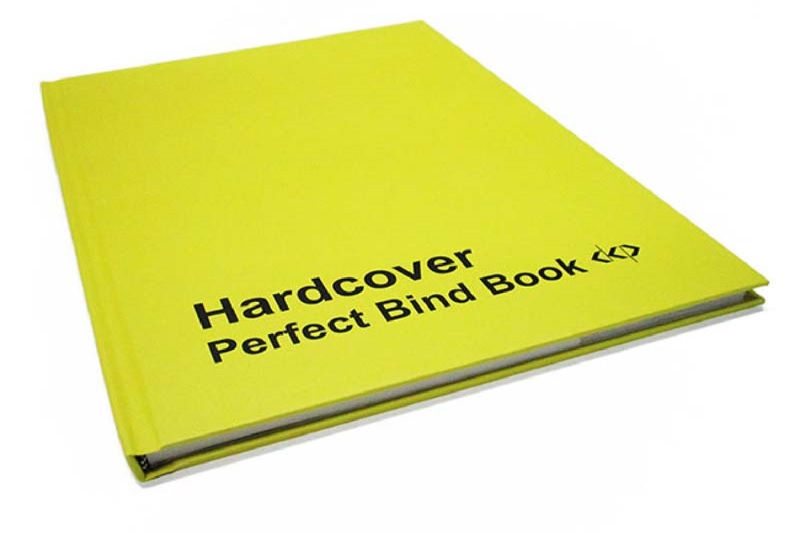Understanding the Basics of Perfect Binding Services
- Daisy Andrew
- Jan 9
- 3 min read

Have you ever looked at a glossy, pristine book on a shelf and found yourself marvelling at its flawless folds and perfect spine? Are you a budding author or a small-scale publisher, curious about what it takes to bring a book from the realm of ideas into a tangible, hold-in-your-hand product?
Perhaps you're a design enthusiast who's curious about the behind-the-scenes processes which dictate the form and function of everyday objects. Whatever your motivation, you're about to get an insider's look at one of the underappreciated cogs in the machinery that creates books: perfect binding services.
Ideal for soft-cover books, catalogues, and magazines, perfect binding services meld durability, affordability, and aesthetic appeal into one package. But what is it exactly? How does it work? And where might it be useful? From explaining its fundamental principles, to weighing its pros and cons, this comprehensive guide will equip you with all you need to know about perfect binding services.
Exploring Perfect Binding: What is it exactly?
Diving straight into the topic perfect binding, also known as adhesive binding, owes its "perfect" moniker to its smooth, square-spined finish. It involves the following key steps: gathering pages into a block, roughening and flattening the spine edge, and then applying adhesive for binding the cover.
Perfect binding is more than just a binding option. It's a tangible way to add value to any printed material. With its ability to accommodate a high page count, perfect binding opens up possibilities for thicker publications, whether it's glossy magazines or heavy textbooks.
The Mechanics of Perfect Binding: How does it work?
The "magic" behind perfect binding is in its simplicity – its modus operandi is expeditious and suitable even for high-volume production. The process kicks off with arranging the pages or 'signatures' in their correct order.
After the pages have been arranged, their spines are roughened up to ensure optimal adhesion. The next step involves applying a strong, yet flexible adhesive – most commonly EVA (Ethylene Vinyl Acetate) – to the roughened spines. With the adhesive still wet, the cover is pressed onto the spine, and voila!– a perfectly bound publication comes to life.
The Practicality of Perfect Binding: Where might it be useful?
Perfect binding is by no means a one-size-fits-all solution, but it certainly spans a broad spectrum of uses. Thanks to its cost-efficiency and adaptability, perfect binding is ideal for organisations aiming to disseminate information in a professional format without breaking the bank.
It's a popular choice for commercial applications including company reports, manuals, brochures, catalogues, and, of course, books. For authors and self-publishers, perfect binding offers a more affordable option than sewn bindings while still delivering a finished product that's both robust and attractive.
Weighing up Perfect Binding: The Pros and Cons
As with any method, perfect binding has its strengths and weaknesses. On the pro side, it's economical, easy to automate, and yields a clean, professional finish with a relatively flat spine – perfect for displaying title information.
However, on the con side, it may not last as long as other binding methods, such as casebound or sewn binding. Also, pages in perfectly bound books do not lay flat when opened, which might detract from the reading experience.
Insights into the Industry: Who Are the Key Players in Perfect Binding Services?
The perfect binding industry is a global network of businesses, ranging from small, specialised operations to large-scale manufacturing plants. Leaders in the field often provide a comprehensive suite of services beyond just binding – encompassing everything from pre-press preparation, to printing, binding, and distribution.
Future Trends in Perfect Binding: What Lies Ahead?
As the printing industry continually evolves, the demand for perfect binding services grows and adapts. Embracing innovations in binding technology and materials, businesses can leverage more efficient workflows and produce better-quality products, increasing their market appeal.
Conclusion
As we've discovered, perfect binding services are a key player in the production of printed material. From what it is, how it works, to where it fits best and what its strengths and limitations are, we've explored the whole gamut. Understanding its practicality, weighing its pros and cons, and foreseeing its future trends enables us to appreciate the intricacy and value of this essential process.
In the end, whether you're an author, publisher, or just a curious design enthusiast, acknowledging the role of perfect binding services in shaping the books and publications we love, brings a newfound appreciation for what many of us take for granted – a simple, beautifully bound book.
Comments